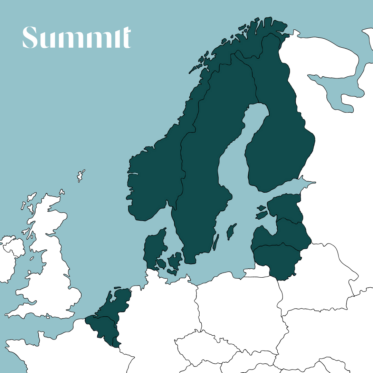You’re giving feedback during a debrief, and suddenly the leader goes quiet. You can feel the rapport evaporate. This unpredictable shift caught you by surprise, and you wish you could have anticipated it in preparing for the feedback session. Predicting feedback resistance is not impossible, however, with all the Hogan personality data you have at your fingertips.
Hogan practitioners can successfully navigate feedback sessions and ongoing development discussions with leaders who compartmentalize or resist feedback, turning resistance into receptivity. Practitioners need to be aware of the likelihood of feedback resistance while interpreting results and during the session itself. By understanding the characteristics that might dispose people to resist feedback, practitioners can purposefully direct a feedback session toward a positive and empowering outcome: helping leaders cultivate strategic self-awareness and behavioral modification strategies to improve their performance.
In this article, we will cover five types of feedback resistance. The hostile, defensive, arrogant, and indifferent feedback resistance types all tend to be individual, while the fifth type, cultural, emerges from the organizational environment. Our next article about feedback will cover strategies for overcoming feedback resistance.
Let’s dive right in.
Types of Feedback Resistance
Certain scores or scale combinations on the Hogan Personality Inventory (HPI), Hogan Development Survey (HDS), and Motives, Values, Preferences Inventory (MVPI) might point to a likelihood of feedback resistance. For instance, someone who scores moderate (70%–89%) or high (90%–100%) on the HDS Cautious scale may resist change in how they work. By no means does this imply that every person with a high Cautious score will seem defensive during feedback or development. It does, however, indicate that a Hogan practitioner should deliver feedback mindfully, taking care to ask questions and demonstrate openness.
Note that the following overview of types of feedback resistance is not exhaustive. Neither are the scale scores we highlight for each type. Remember, feedback resistance is as unique and complex as each personality.
Hostile
Someone who offers hostile feedback resistance may have some combination of these scale scores: low Ambition (HPI), high Excitable (HDS), high Skeptical (HDS), and low Altruistic (MVPI).
Negative performance implications associated with low Ambition are lack of vision, energy, and drive, and lower confidence, which may cause them to view change as too hard. High Excitable is associated with moodiness, feeling easily frustrated and disappointed, emotional volatility, and being prone to quit in frustration. Someone with a high Skeptical score may take criticism personally and seem tense, upset, or angry. A person who scores low on the Altruistic scale can be perceived as tough, assertive, forceful, outspoken, and willing to confront problems.
Depending on the unique circumstances of a feedback session—up to and including the leader’s momentary frame of mind—hostile resistance might manifest as argumentation, emotional outbursts, or rejection.
Defensive
Defensive feedback resistance might be more likely in a leader who has some combination of these scale scores: low Adjustment (HPI), low Interpersonal Sensitivity (HPI), low Learning Approach (HPI), high Excitable, high Skeptical, and high Science (MVPI).
Someone who scores low on the Adjustment scale, while generally responsive to coaching and feedback, might seem overly self-critical, stress-prone, and anxious. Negative performance implications of low Interpersonal Sensitivity are criticism and skepticism. A low Learning Approach score may indicate an intolerance of development and a belief that traditional or non-skills-based learning is unpleasant or unhelpful. High Skeptical and high Science scores together could suggest someone who is suspicious about or mistrustful of claims not backed up by objective, verifiable data.
Defensive feedback resistance likely stems from negative beliefs about the reliability, purpose, or usefulness of development and may emerge in self-deprecation, anxiety, or doubt.
Arrogant
People who exhibit arrogant feedback resistance may have some combination of these scale scores: high Sociability (HPI), high Learning Approach, low Cautious, high Colorful (HDS), and high Recognition (MVPI).
A high Sociability scale score is associated with attention-seeking behavior and competition for the center stage. A high Learning Approach scale score is associated with valuing learning above doing and seeming like a know-it-all. Someone with a low Cautious score is likely to seem comfortable with risk and nonchalant about making mistakes. A high Colorful score may indicate someone who seems self-promoting, overcommitted, easily angered, and quickly bored. A leader with a high Recognition score probably values attention and public acknowledgement and may be described by others as seeming self-important or conceited.
Arrogant feedback resistance may emerge as a disbelief in or denial of the need for change and an attempt to preserve an inflated self-image by using performance, authority, or charm.
Indifferent
Indifferent feedback resistance may appear in someone who has some combination of these scale scores: average or high Adjustment, high Skeptical, high Reserved (HDS), high Leisurely (HDS), and high Imaginative (HDS).
Someone with average Adjustment might seem nonchalant about work, whereas someone with high Adjustment might tend to discount or ignore negative feedback because of strong self-confidence. A person scoring high on the Skeptical scale may seem indifferent to feedback because they are unpersuaded that change is necessary. Negative performance implications of high Reserved scores include interpersonal insensitivity, self-absorption, distant or absent communication, and disinterest in matters perceived as unrelated or unimportant. A person with a high Leisurely score could exhibit passive-resistant behavior by appearing neutral or agreeable but feeling resentful and ignoring feedback. A high Imaginative leader may discount others’ opinions and behave in an eccentric, distractable, or preoccupied manner.
Indifferent feedback resistance in a leader may resemble a lack of enthusiasm, withdrawal, unresponsiveness, distraction, or boredom, and it may also conceal other emotions.
Cultural
In a workplace environment in which individual growth and change are not celebrated, feedback resistance or compartmentalization may be more likely to occur. This may appear in an environment characterized by some combination of these values: low Power (MVPI), low Altruistic, high Tradition (MVPI), and high Security (MVPI).
A culture with low Power values would be unlikely to reward growth and challenge or display interest in achievement. Negative cultural implications of low Altruistic are an emphasis on personal responsibility and self-reliance to the degree that support or resources for development are lacking. A high Tradition culture is comfortable with established procedure and consequently tends to be resistant to change. A high Security culture will tend to favor rules and conformity and resist ambiguity, risk, performance appraisal, and innovation.
Cultural feedback resistance might appear as a lack of support for development or change and a fear of risk or failure.
Getting to Feedback Receptivity
Keep in mind that, for some scales such as Adjustment or Learning Approach, feedback resistance might be a behavior that can emerge with more than one score range. Low Adjustment could be a factor in feedback resistance in one leader, but so could high Adjustment in another. As always, individual self-awareness, the context for development, and scale combinations influence how feedback resistance might appear. After predicting the likelihood and type of feedback resistance that the leader might exhibit, a Hogan practitioner can strategize the best ways to minimize that resistance during a feedback session.
When we perceive and appreciate the everyday personality strengths, potential derailers, and the motives, values, and preferences that underlie individuals’ actions and choices, we gain a more complete picture of how to enable their success.
Look out for our upcoming blog about techniques for overcoming feedback resistance to learn how to personalize feedback to empower leaders.
This post was originally published on the Hogan Assessments blog.



